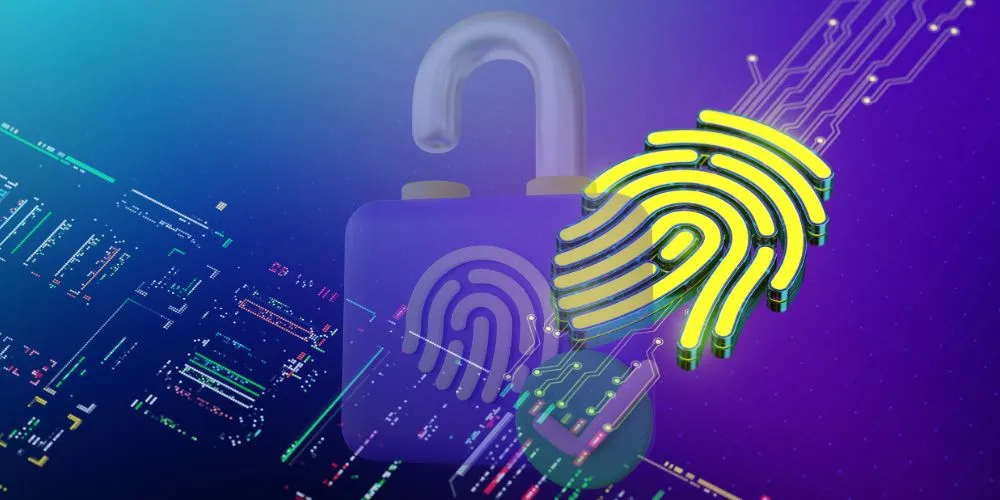Biometric authentication, a revolutionary facet of cybersecurity, has emerged as a key player in safeguarding digital assets by leveraging unique physical and behavioral attributes for identity verification. This article delves into the comprehensive domain of biometric authentication, exploring its fundamental principles, diverse methodologies, key advantages, notable applications, and the challenges it addresses within the dynamic landscape of digital security.
Unveiling Biometric Authentication
Biometric authentication involves using distinctive biological or behavioral characteristics to verify an individual’s identity. This innovative approach leverages unique attributes such as fingerprints, facial features, voice patterns, iris scans, or even behavioral traits like keystroke dynamics. Utilizing characteristics inherently specific to each person offers a highly safe and personalized method of identity verification.
Key Components of Biometric Authentication
Understanding the key components of biometric authentication is essential for comprehending its scope and impact:
- Biometric Data Capture: The process begins with capturing biometric data, including fingerprints, facial scans, retina patterns, voiceprints, or behavioral traits. Specialized sensors or devices are employed to collect this unique information.
- Biometric Template Creation: The captured data is then converted into a biometric template, a digital representation that extracts key features or points from the biometric data. This template serves as a reference for subsequent authentication attempts.
- Matching Algorithm: A matching algorithm compares the presented biometric data with the stored template during the authentication process. The identity is verified if the characteristics match within a predefined threshold, granting access or authorization.
Methodologies of Biometric Authentication
Biometric authentication employs various methodologies to validate and secure digital access:
- Physiological Biometrics: This category includes physical characteristics such as fingerprints, hand geometry, iris scans, and facial recognition. Physiological biometrics are based on inherent physical traits unique to each individual.
- Behavioral Biometrics: Behavioral biometrics involve traits related to an individual’s behavior, such as keystroke dynamics, signature dynamics, or voice patterns. An individual’s habits often influence these traits and can enhance the security of authentication.
- Multi-Modal Biometrics: Combining multiple biometric modalities, known as multi-modal biometrics, offers a more robust and secure authentication approach. It could involve combining fingerprint and facial recognition or voice and behavioral biometrics.
Advantages of Biometric Authentication
The adoption of biometric authentication brings forth a multitude of advantages, fortifying the overall security posture and user experience in digital environments:
Unparalleled Security
One of the primary advantages of biometric authentication is its unparalleled security. Biometric traits are unique to each individual, making it extremely challenging for unauthorized entities to replicate or forge these characteristics.
Enhanced User Convenience
It enhances user convenience by eliminating the need for traditional passwords or PINs. Users can seamlessly authenticate their identity through a quick scan or recognition process, streamlining the login experience.
Non-Repudiation and Accountability
Biometric authentication provides non-repudiation, ensuring an individual cannot deny their actions. This attribute enhances accountability, particularly when access to sensitive information or critical systems is involved.
H3: Reduced Dependency on Passwords
The reliance on traditional passwords is mitigated through biometric authentication. It is crucial as passwords are susceptible to being forgotten, shared, or stolen, whereas biometric traits are inherent and unique to each individual.
Applications of Biometric Authentication
Biometric authentication finds applications across diverse industries and digital platforms, influencing how individuals access and secure their digital identities:
Mobile Device Security
In the realm of mobile device security, it is commonplace. Fingerprint recognition, facial recognition, and iris scans are integrated into smartphones to provide secure and convenient access to personal devices.
Financial Transactions and Banking
Biometric authentication is extensively used in financial transactions and banking. Iris scans, fingerprints or facial recognition can secure access to banking apps, authorize transactions, or validate identity during account access.
Airport Security and Travel
It is utilized for identity verification and seamless passenger processing in airport security and travel. Facial recognition, in particular, expedites check-in, security checks, and boarding processes.
Healthcare Records and Patient Verification
In healthcare, biometric authentication secures patient records and verifies identities. It ensures that only authorized personnel can access sensitive medical information, enhancing patient confidentiality and compliance with privacy regulations.
Challenges in Biometric Authentication
While the advantages are evident, the practice of biometric authentication faces its challenges. Addressing these challenges is important for realizing the full potential of biometric authentication efforts:
Privacy Concerns and Data Security
Privacy concerns arise regarding the storage and protection of biometric data. Ensuring robust data security measures and adherence to privacy regulations is essential to building and maintaining trust among users.
Vulnerability to Spoofing
Biometric authentication methods are susceptible to spoofing attempts, where malicious actors attempt to deceive the system using replicas or manipulated biometric data. Implementing anti-spoofing technologies is critical to counter this threat.
Standardization and Interoperability
The lack of standardized biometric formats challenges interoperability between different systems and devices. Establishing industry standards would facilitate seamless integration and enhance the overall effectiveness of biometric authentication.
Ethical and Legal Considerations
Ethical and legal considerations surrounding the use of biometric data raise questions about consent, data ownership, and potential misuse. Striking a balance between innovation and ethical usage is vital for responsible implementation.
Future Trends in Biometric Authentication
As technology continues to evolve, future trends in biometric authentication point toward advancements that further enhance its capabilities:
Continuous Authentication
The shift toward continuous authentication involves ongoing verification throughout a user’s session rather than a one-time authentication at the beginning. This adaptive approach enhances security by continuously validating the user’s identity.
Biometric Encryption and Tokenization
Biometric encryption and tokenization involve the secure storage of biometric templates and using tokens for authentication. It enhances privacy by decreasing the reliance on centralized biometric databases.
Fusion of Biometrics with Artificial Intelligence
Fusing biometrics with artificial intelligence (AI) enhances accuracy and security. AI algorithms can adapt to changes in biometric traits, improving recognition accuracy and mitigating vulnerabilities associated with static biometric data.
Emotion Recognition for Behavioral Biometrics
Advancements in emotion recognition technology enable the incorporation of emotional cues as behavioral biometrics. It adds an extra layer of security by considering the user’s emotional state during authentication.
Conclusion
Biometric authentication stands as a transformative force in digital security, offering a personalized and highly secure method of identity verification. Its role in fortifying access to sensitive information, enhancing user experience, and mitigating traditional security challenges is paramount in an era where digital threats continue to evolve.
While challenges persist, ongoing advancements and trends indicate a dynamic and promising future for biometric authentication, with applications extending into new frontiers of technology, encryption, and adaptive security measures. The responsibility to implement and evolve biometric authentication practices rests on organizations, technology developers, and policymakers, urging them to navigate the ethical and legal landscape while embracing innovative approaches for a secure digital future.










